Get PeakVisor App
Sign In
Search by GPS coordinates
- Latitude
- ° ' ''
- Longitude
- ° ' ''
- Units of Length

Yes
Cancel
Share ×

Scan the QR code and open PeakVisor on your phone
❤ Wishlist ×
Choose
Delete
Czechia, known more commonly as the Czech Republic, and formerly as Bohemia, is a small country located in central Europe. Nearly a third of the country is covered in vast sections of forest, including the largest stretch of contiguous forest in central Europe. The tallest and most prominent peak in Czechia is Sněžka at 1,603 m (5,259 ft) in elevation with 1,188 m (3,898 ft) of prominence.
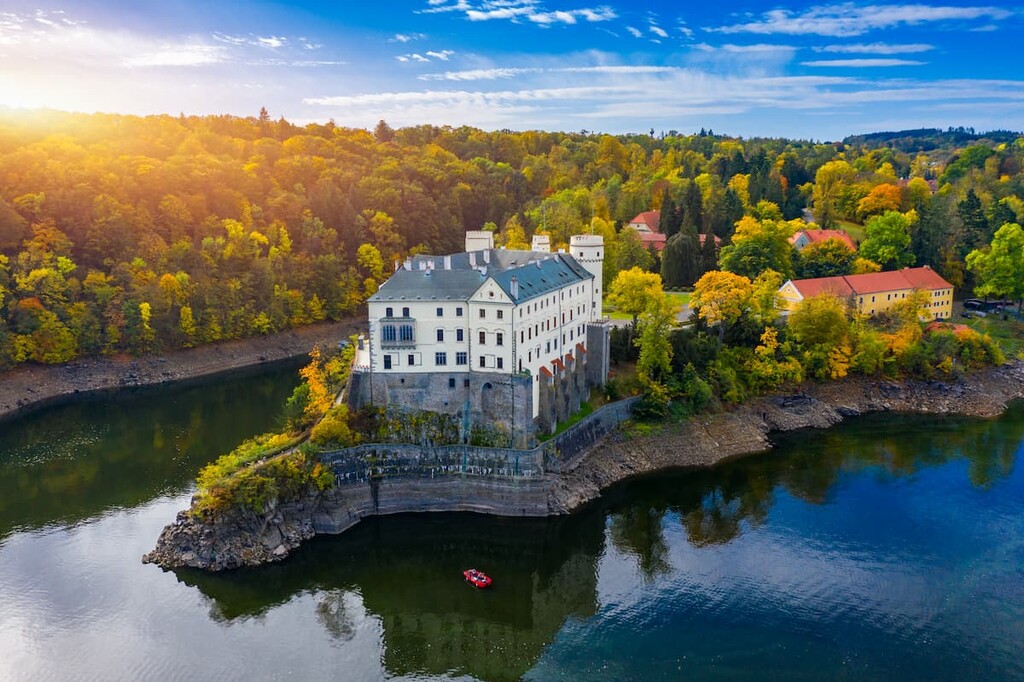
The country of Czechia (officially the Czech Republic/Česká republika) is a relatively small land-locked country in central Europe.
With a total area of 78,871 s.q km (30,452 sq. miles), Czechia is the 115th largest country on Earth after Azerbaijan, Austria, and the United Arab Emirates, though it is slightly larger than Panama and Sierra Leone.
Czechia’s location within the heart of central Europe means that it is completely landlocked. The country shares borders with four other nations. These include Germany to the north and west, Poland to the northeast, Slovakia to the southeast and Austria to the south.
Technically, Czechia also claims an enclave, Moldauhafen, which is a small lot located in the middle of the port of Hamburg in Germany. Moldauhafen was awarded to Czechoslovakia in 1929 on a 99 year lease as part of the Treaty of Versailles. However, the lease expires in 2028 and it is not clear what will happen to the enclave after that time.
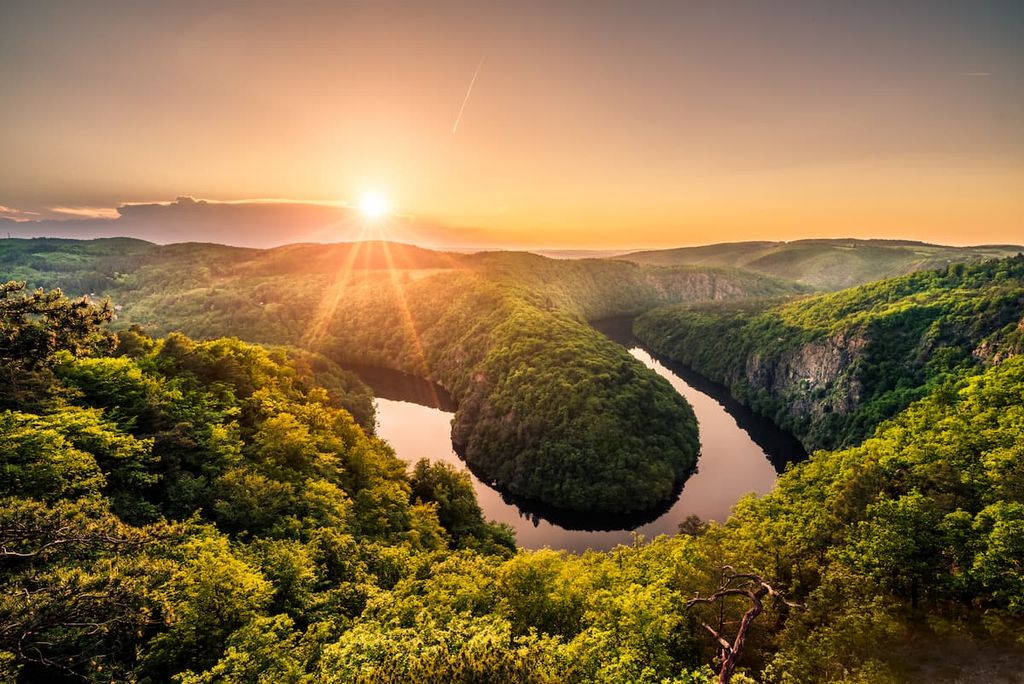
Historically, the land that is now Czechia was divided up into three regions: Bohemia to the west, Moravia in the east, and Czech Silesia in the northeast. However, the country is now administratively divided up into thirteen regions (called kraje) as well as one capital city. The regions include:
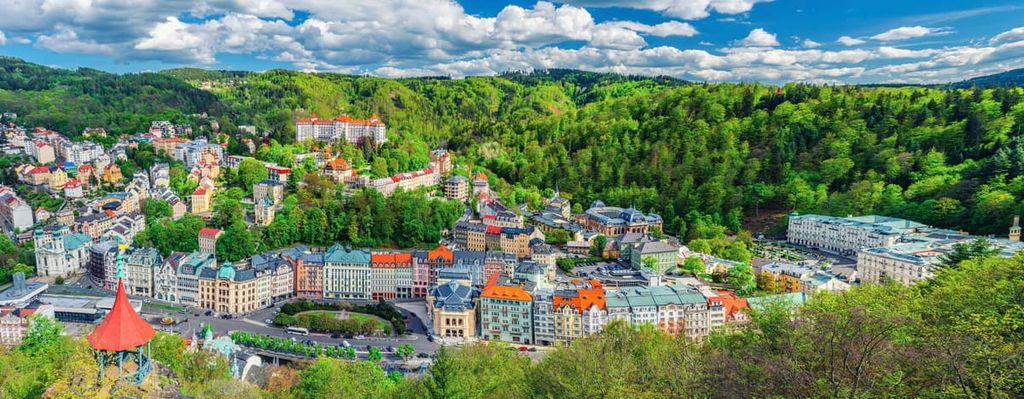
Physically, however, Czechia can be divided up into a number of different regions. The landscape throughout the country is marked mainly by large plateaus, rolling hills, low mountains, and major rivers. The country contains four national parks:
Some of the major physiographic features in the country include:
The northern border of the country is marked by the Ore Mountains (Krušné hory). Dense sections of forest cover the rolling hills of the range. The Elbe River (Labe in Czech), which begins in the northeastern section of Czechia, also runs through the range.
One of the most defining features of the Ore Mountains are the Elbe Sandstone subrange. Within the Ore Mountains lie towering sandstone formations. The largest sandstone arch and the largest sandstone canyon in Europe are within the eastern edge of the Ore Mountains.
Deep river canyons wind throughout the sandstone formations. South of the mountain range, rolling foothills give way to the plateaus of central Czechia.
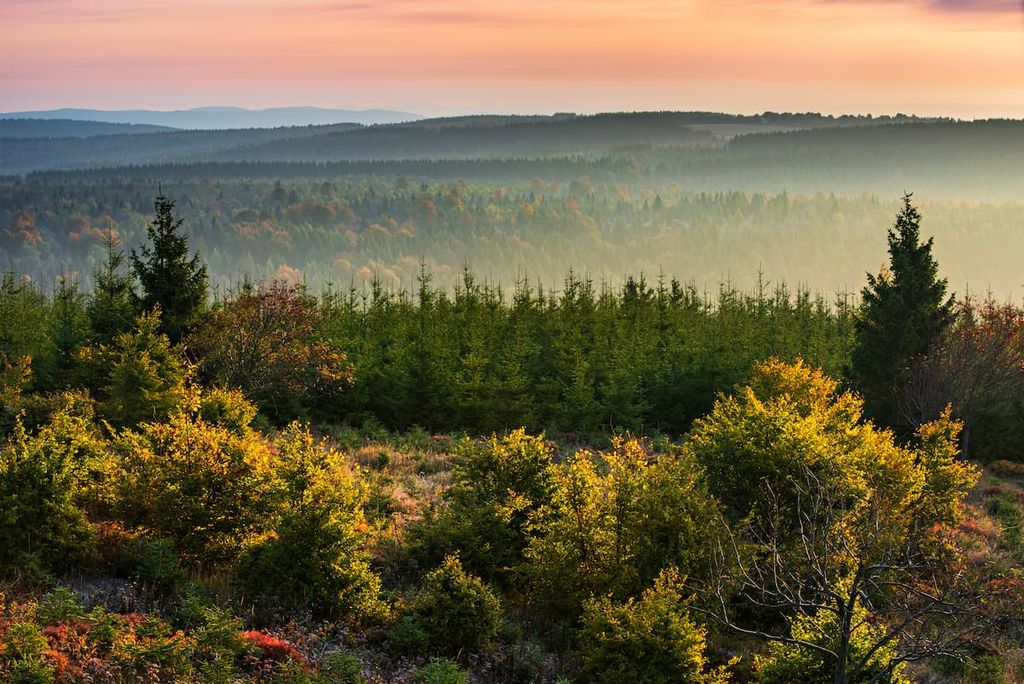
In the northeastern region of Czechia lies the Sudetic Mountains (Krkonošsko-jesenická subprovincie), home to the tallest peak in the country. The Sudetes mark the highest point in the Bohemian Massif.
Here the Krkonoše Mountains run along the country’s border within Krkonoše National Park. The peaks in this region are met with high alpine meadows, and flat ridgelines. The main ridgeline forms a natural barrier between Czechia and Poland .
The headwaters to the Elbe River are found in this section of the country amidst fields of wildflowers and steep peaks.

The Carpathian Mountains (Karpaty) lie partly in the southeastern region of Czechia. Though the range spans 1,700 km (1,056 miles) across Europe, only about 3 percent of its peaks lie within Czechia. The rest of the range is located in Slovakia, Hungary, Poland, Romania, Ukraine, and Serbia.
The White Carpathians refer to the subrange within the country. Jagged peaks mark the territory while forested hillsides often reach the summits. These dense forested sections are interspersed with regions of open fields, small villages, and ruins of numerous castles.
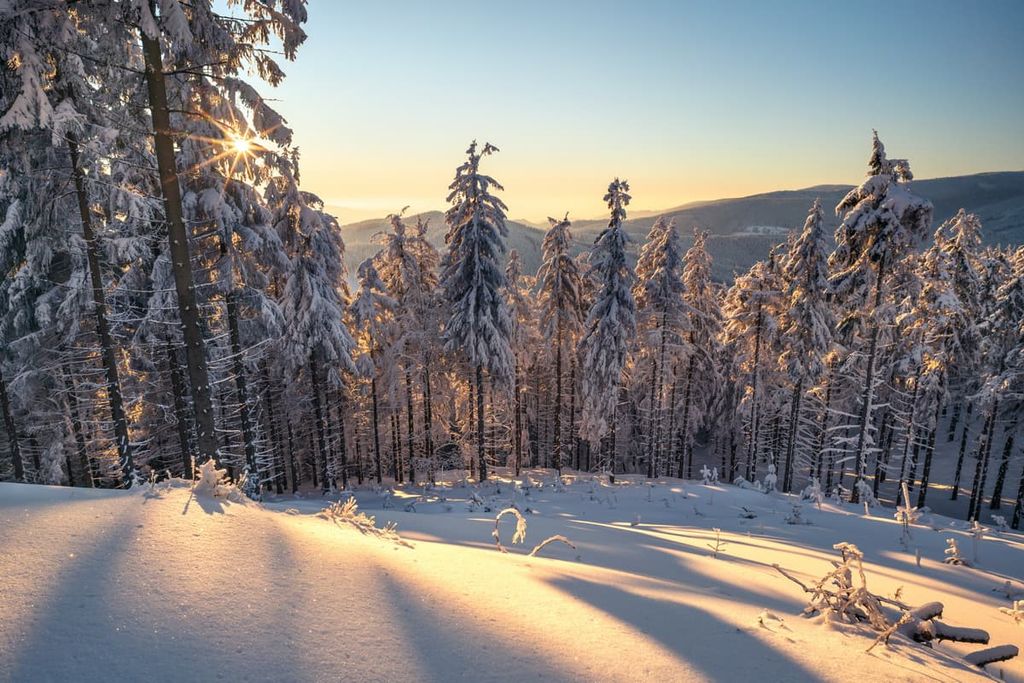
Šumava, also known as the Bohemian Forest, is located in the southwest of the country. This forest spans into Germany and marks the largest continuous section of forest in all of central Europe.
Plateaus within the forest are often covered in peat bog with small lakes dotted throughout. Distinct rolling hills distinguish this region from the rugged peaks in the east and south of the country.
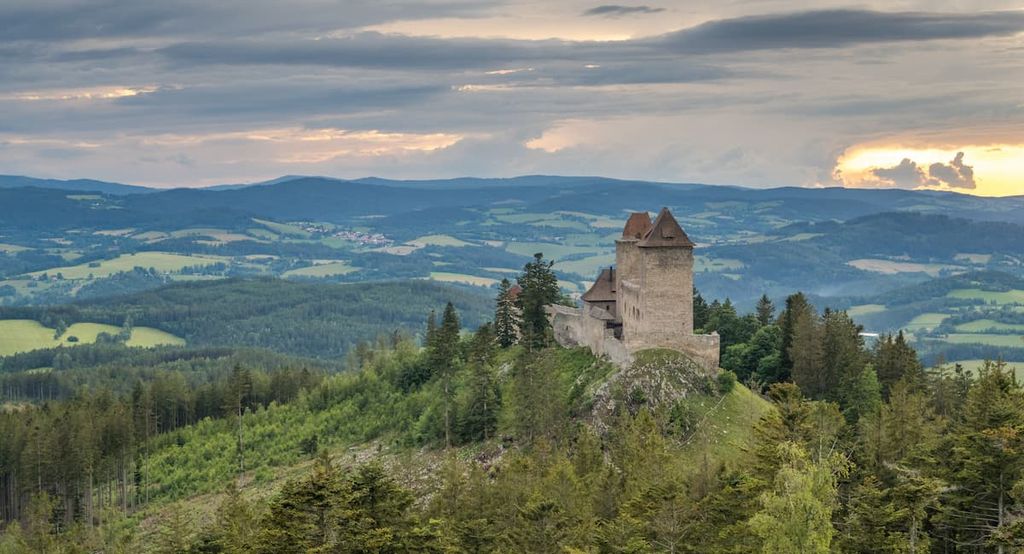
Czechia is home to four major rivers. The Elbe River (Labe) begins in the Krkonoše Mountains within Krkonoše National Park. After flowing south, the river makes a wide curve before traveling northwards into the North Sea.
The Morava River flows southward eventually leading to the Black Sea. The Odra River (Oder) travels north and eventually ends in the Baltic Sea. Lastly, the Vltava River is the longest river in the country. The river eventually joins with the Elbe River.
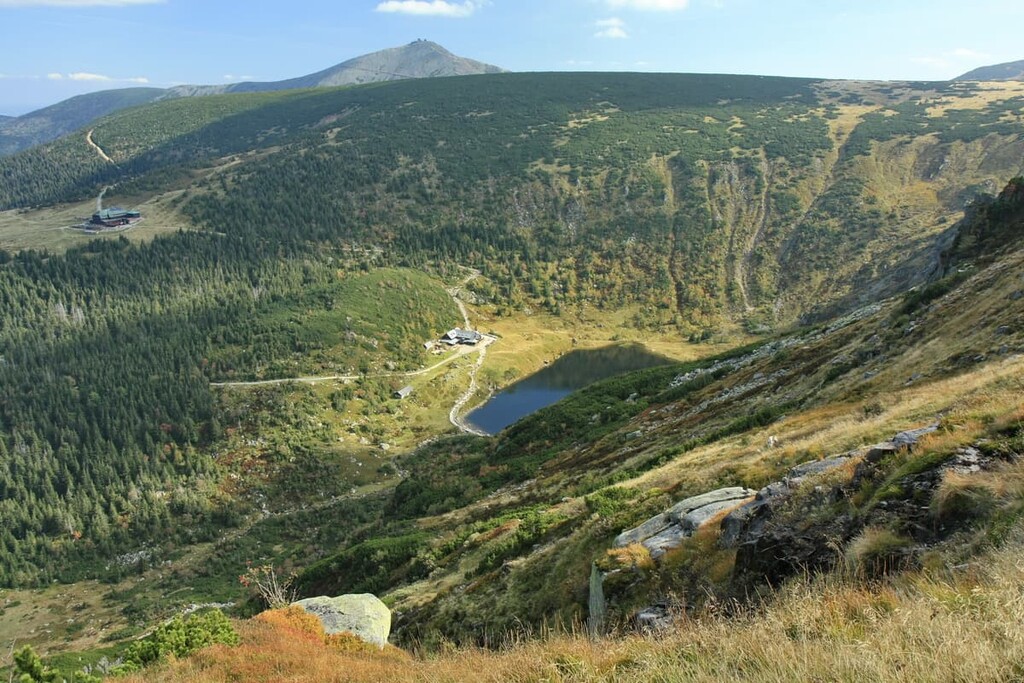
The major geological feature of Czechia is the Bohemian Massif. The massif formed during the Variscan orogeny during the late Palaeozoic, over 100 million years ago.
The closing of the Rheic Ocean was caused by the continual collision of the tectonic plates that housed the palaeocontinents of Gondwana and Laurasia. After the closure of the Rheic Ocean, the collision of the two places led to the formation of the supercontinent of Pangaea and what is now the Bohemian massif.
The Elbe Sandstone Mountains in the north of the country were once part of the sea floor. Millions of years of sediment deposits were carried through the waterways of the region around the Cretaceous period.
The retreat of the sea and the subsequent compaction of this marine sediment created multiple strata of sandstones. Millions of years of erosion carved out the structures, river valleys, arches, and caves that we see in the region today.
The southern part of this range was upthrust by the Karsdorf Fault. This activity changed the gradient of the Elbe river, leading to further erosion in the region. The Elbe River has shaped much of northern Czechia. Starting in the Sudetes, the river loops around the most populous city in the country before traveling northwards into Germany.
The Mesozoic and Cenozoic periods brought about further formation of the landscape. Faulting during the Alpine orogeny resulted in the rolling peaks in the western region of Czechia.
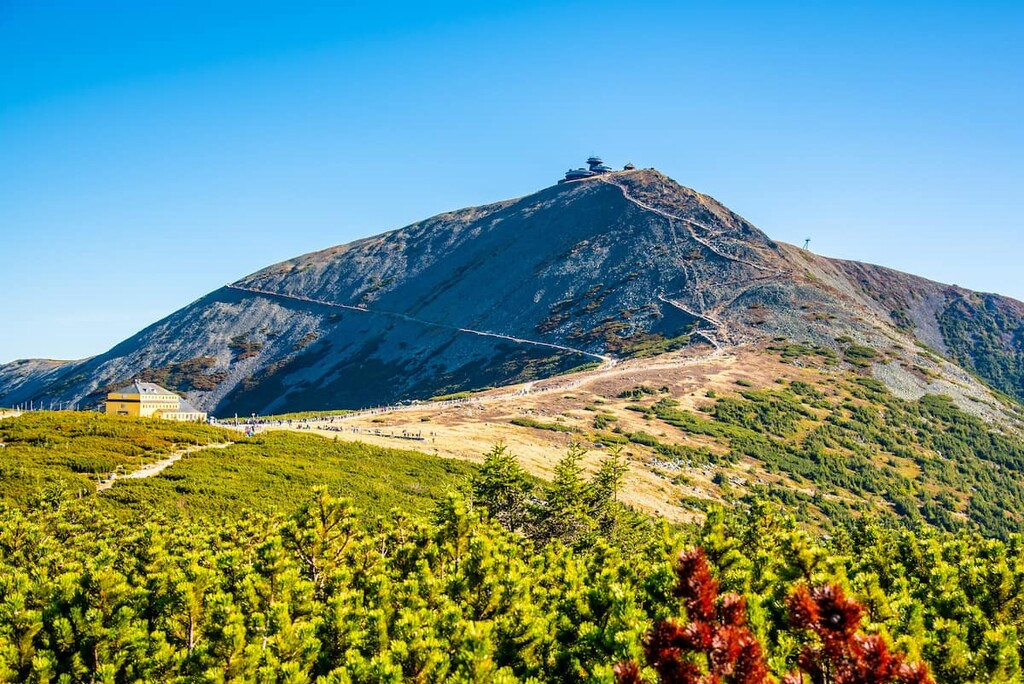
Tectonic activity during both the Variscan and Alpine orogenies also formed the Sudetes in northeastern Czechia. The peaks of the region were covered with ice during the Pleistocene period. As the glaciers melted, glacial cirques and periglacial landforms were left behind.
Major peaks within the country include Sněžka, Luční hora, Studniční hora, Praděd, Růžovský vrch, and Plechý / Plöckenstein.
The diversity of landscapes throughout the country allow for a plethora of flora and fauna to thrive within Czechia.
Nearly a third of the country is covered by forest. A majority of the forests in Czechia consist of coniferous trees, mainly spruces and pines. Mixed forest can also be found, though they are more common in the lowland regions of the country.
Oak groves along with linden trees are dotted throughout the region. Bogs can be found in plateaus of the country, mainly in the southeastern region. Within the bogs are often dwarf birch, deergrass, bog rosemary, spring quillwort, and bog sedge.
Higher elevations in Czechia, which are mainly found along the border of the country, are home to alpine wildflowers. The river canyons allow for various species of ferns, mosses, and fungi to flourish due to the limited amounts of sunlight at the canyon floor. Other flora found in Czechia include rock bent-grass, Hungarian gentian, ragwort, and multiple orchid species.
Large mammals are often found in the mountains of the country. These species often include bears, lynx, wildcats, and wolves. Occasionally elk can be spotted in Krkonoše National Park.
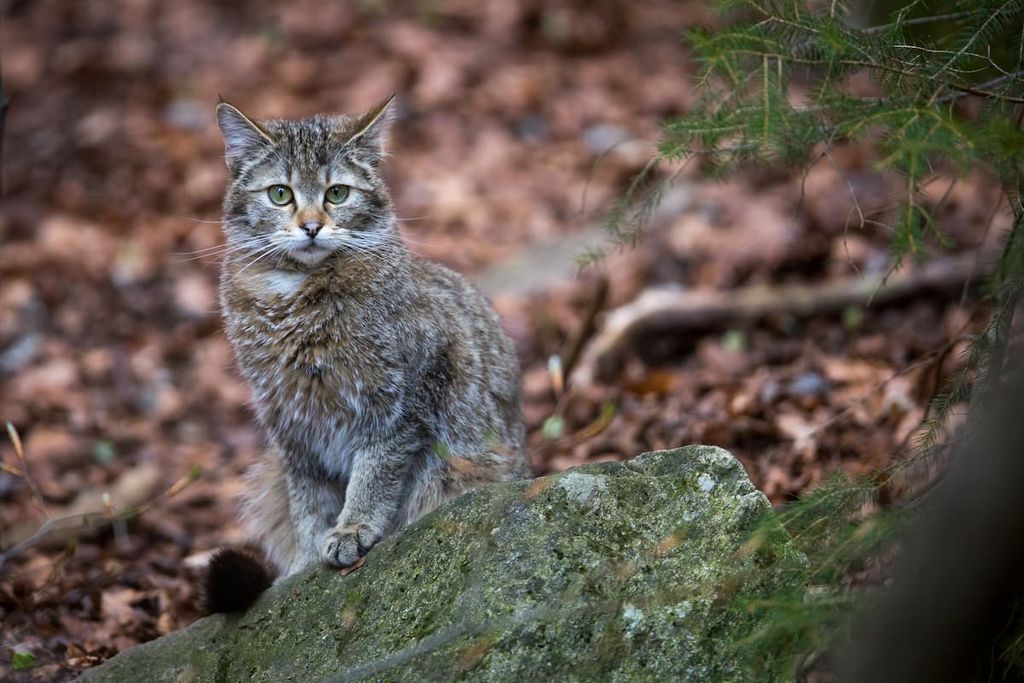
The wetlands are home to smaller animals such as otters, marmots, minks, and martens. Large populations of both roe and red deer can be found throughout the country, especially near the forested sections of landscape. Wild boar are also often found throughout the forest.
Various birds are found throughout Czechia. Wild geese, ducks, pheasants, and other game birds are common across the country.
Other birds such as peregrine falcons, black storks, white-backed woodpeckers, Ural owl, pygmy owls, and alpine accentors can often be spotted in the national parks and protected regions of Czechia. Over a dozen species of bats can also be spotted throughout the country.
The land that is now part of Czechia has been inhabited for thousands of years. The region was populated by the Celts starting in the third century BCE. The Celtic population was later replaced by Germanic and Slavic peoples in the first through sixth centuries CE.
During the eight century, much of what is now Czechia, particularly around Moravia, was Christianized. Meanwhile, the Duchy of Bohemia was later founded in the ninth century after being unified under the Přemyslid dynasty.
In the year 1002, the Duchy of Bohemia was recognized as an Imperial State within the Holy Roman Empire. In the thirteenth century, Ottokar I received a decree from Frederick II, Holy Roman Emperor, confirming the status of the new Kingdom of Bohemia.
Throughout the thirteenth century, the Kingdom of Bohemia saw a rise in immigration by Germanic peoples. The Protestant Reformation came to Bohemia in the late fourteenth century and early fifteenth century in the aftermath of the Hussite Wars.
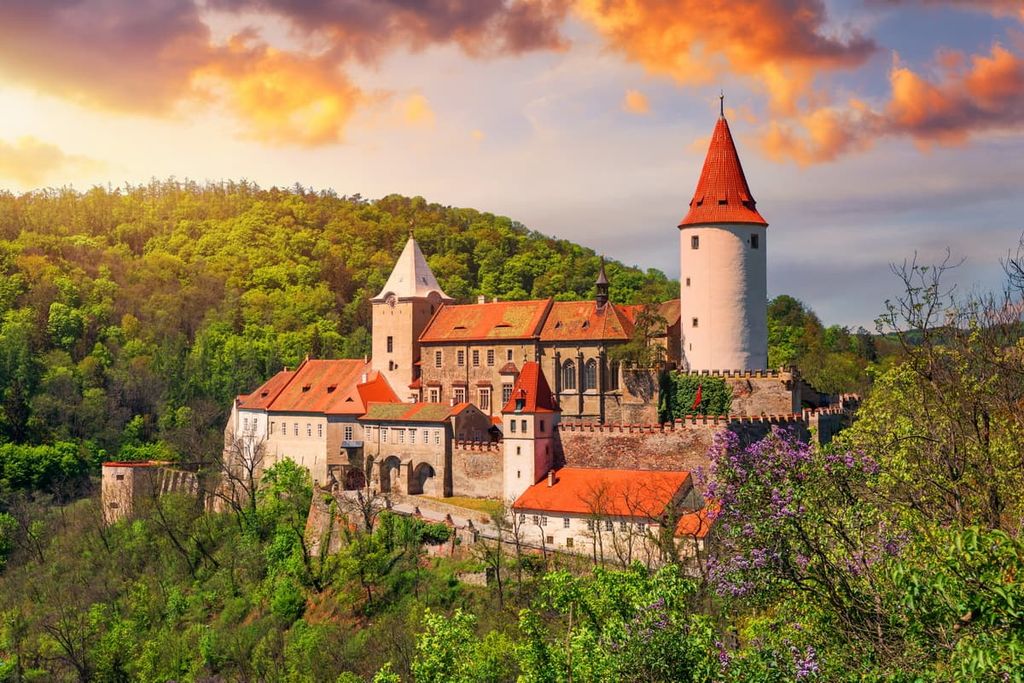
Later, in the sixteenth century, the Habsburgs gained increasingly large amounts of influence in Bohemia. Though they were first elected to rule, they later became the hereditary rulers starting in the seventeenth century. Eventually, a 1618 revolt against the Habsburgs (the Bohemian Revolt) marked the start of the Thirty Years’ War.
From 1620 to the eighteenth century, the population of Bohemia began to rapidly decline as Protestants were forced to leave the region by the Habsburgs or convert to Catholicism. The Holy Roman Empire ended in 1806 and the land of Bohemia then became part of the Austrian Empire.
Toward the end of the nineteenth century, Czech nationalists movements were on the rise in the region. Nevertheless, the signing of the Austro-Hungarian Compromise of 1867 by Franz Joseph I, Emperor of Austria, was a disappointment to many in the region as it failed to provide what is now Czechia with more power and autonomy.
At the end of World War I and in the aftermath of the collapse of the Habsburg Dynasty, the independent republic of Czechoslovakia was formed. Between WWI and WWII, the country was the only democracy in central Europe.
During the rise of WWII, the country was occuppied by Germans and a Nazi concentration camp, Theresienstadt, was constructed within the country’s borders. German occupation ended in 1945 in the aftermath of the Prague Uprising and the arrival of US and Soviet forces.
For over 40 years, Czechoslovakia was a communist state, until the Velvet Revolution of 1989. This was followed by a period of rising Slovak nationalism. In 1993, the Czech Republic and Slovakia finalized a peaceful split of territory, creating the two independent countries that exist today.
Nowadays, the Czech Republic boasts a highly developed and diversified economy. The country has a strong automotive manufacturing industry, a growing technology industry, and a strong tourist industry, thanks to its many stunning historic sites and rich cultural heritage.

Czechia is home to numerous protected regions and hiking trails. Here are some of the most popular spots in the country to visit during your next trip:
Bohemian Switzerland National Park is the most popular park in the country. Located along the country’s northern border with Germany, the park is home to the largest natural sandstone arch in all of Europe. Here, rolling hills are met with sandstone outcrops and deep river ravines.
Edmund's Gorge and the Stille Gorge are located at the center of the park along with numerous abandoned ruins. Today, the park is home to a multitude of trails, as well as world-renowned rock climbing routes.
Popular trails within the park include Růžovský vrch, Belvedér Terrace, and trails along Kamenice riverbank and the Kamnitz Gorge.
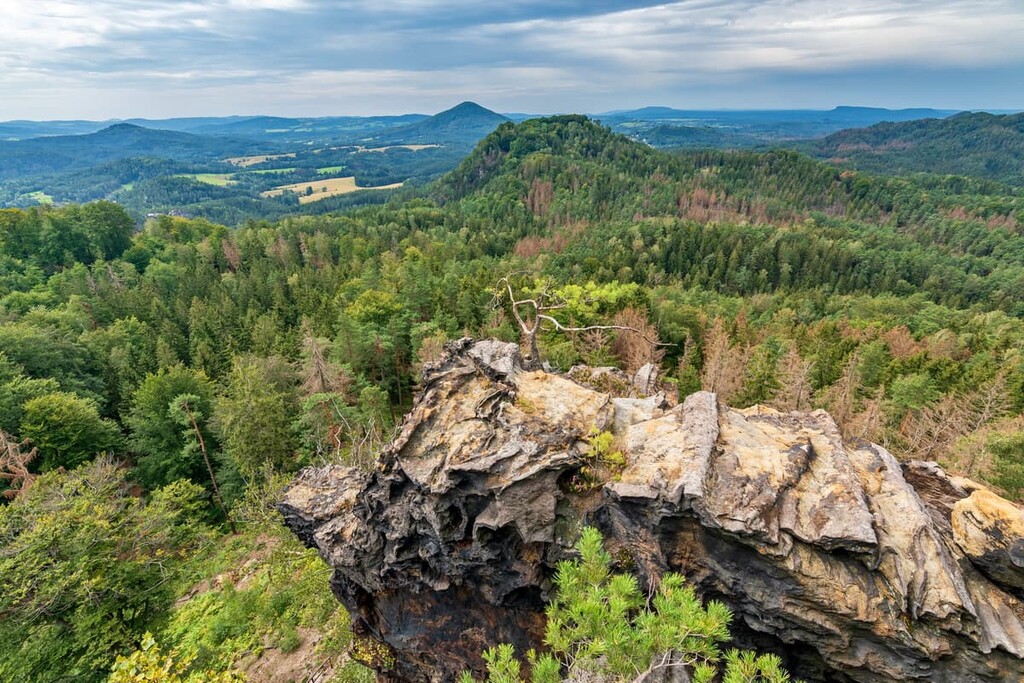
Krkonoše National Park is situated in the northeastern region of Czechia. Within the park lies the tallest mountain in the entire country—Sněžka.
The rugged mountain landscape in the park is home to many of the tallest peaks in Czechia. Here, forested hillsides are met with alpine meadows and panoramic viewpoints along the ridgelines. The headwaters of the Elbe River are also found within the park.
Great hikes within Krkonoše National Park include Sněžka trail, Pec pod Sněžkou, Sněžka, Růžohorky trail, and the Jizerské hory a hřeben Krkonoš point-to-point trail across the main ridgeline in the region.
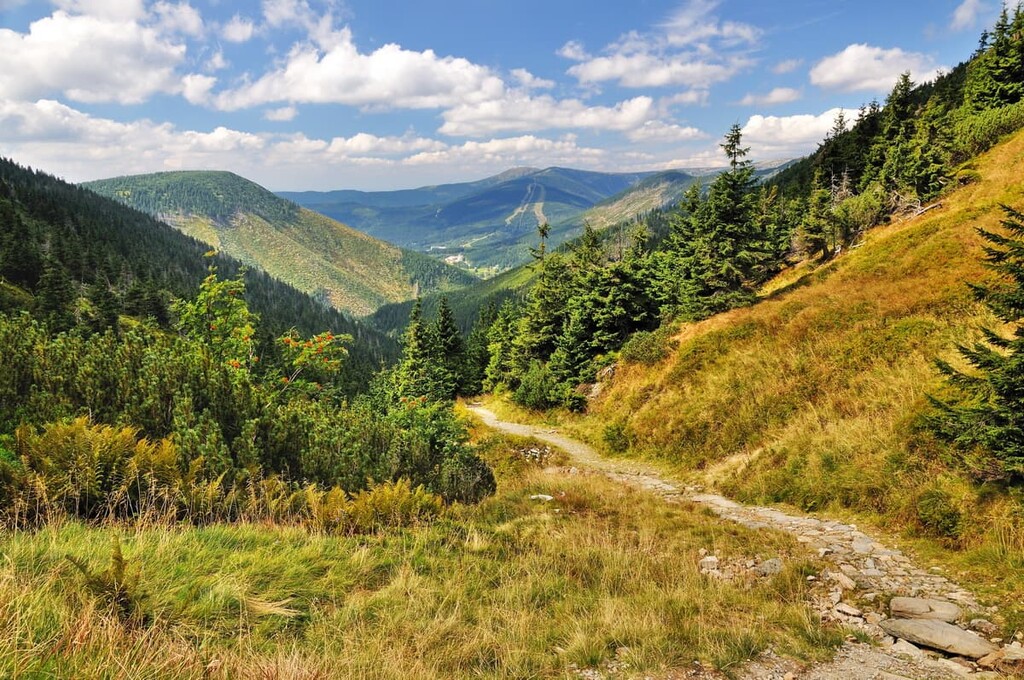
Šumava National Park lies along the southwestern border of the country. The park is home to the most extensive stretch of forest in central Europe, and it is Czechia’s largest national park.
The dense forest in the park is also home to raised sections of peat bog and small alpine lakes. The rolling foothills in the region give way to the flatter terrain of southeastern Germany.
Popular trails in the park are Plechý / Plöckenstein Trail, Black and Devil’s Lakes Loop Trail, and Prášilské Lake Trail. Lookout towers can be found throughout the park allowing for views above the main treeline.
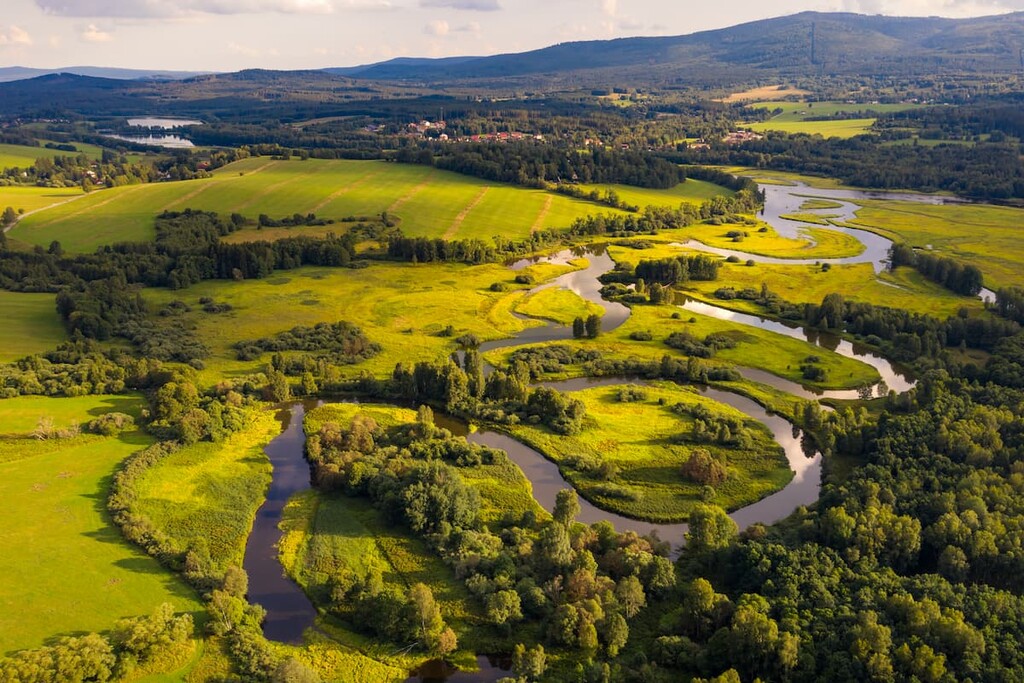
Looking for a place to stay in Czechia? Here are some of the best cities and villages to check out in the country:
Prague is the capital city of Czechia and the most populous city in the country. While the city is home to 1.3 million people, the metro population of Prague is nearly 3 million. Situated near the center of the country, Prague provides easy access to the rest of Czechia.
The Prague Castle is among the largest castle complexes in the entire world, spanning over 6 hectares (15 acres). Other popular attractions in the city include Our Lady Before Týn church, Charles Bridge, Prague’s astronomical clock, and exploring the vibrant food and drink scene.
Prague is also known as the beer capital of the world as Czech citizens drink more beer per capita than any other country. The city is also home to many of the largest music and arts festivals in the country.
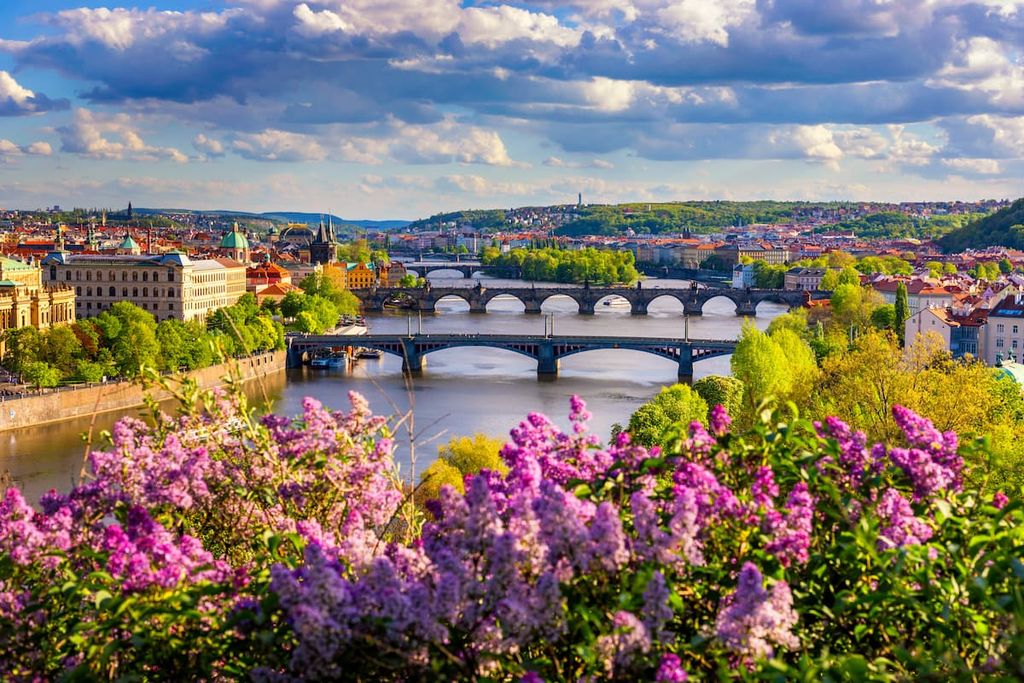
Situated near Krkonoše National Park lies Liberec. The city has a population of over 100,000 people and is the fifth most populous city in Czechia.
Home to the North Bohemian Museum, Liberec offers a view into the region’s rich and long history. Just an hour's train ride away from Prague, Liberec provides solitude in the city. Popular sites include Liberec Castle, Ještĕd Castle and Liberec Town Hall.
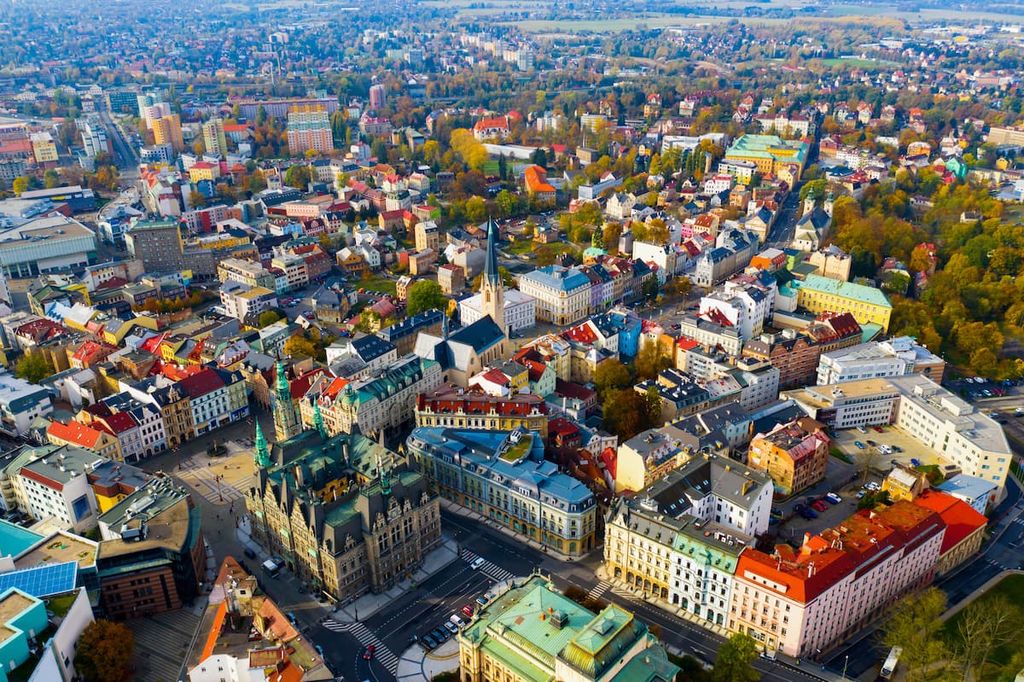
Ústí nad Labem lies in northern Czechia, just outside of Bohemian Switzerland National Park. As Bohemian Switzerland National Park is the most visited park in the country, the city allows ample access to this well preserved nature, hiking, and rock climbing.
The city has a population of around 95,000 people, and it is an active river port. One of the most popular sites in the city is the Střekov Castle which overlooks the Elbe River. Today the castle acts as a museum showcasing the region’s history.
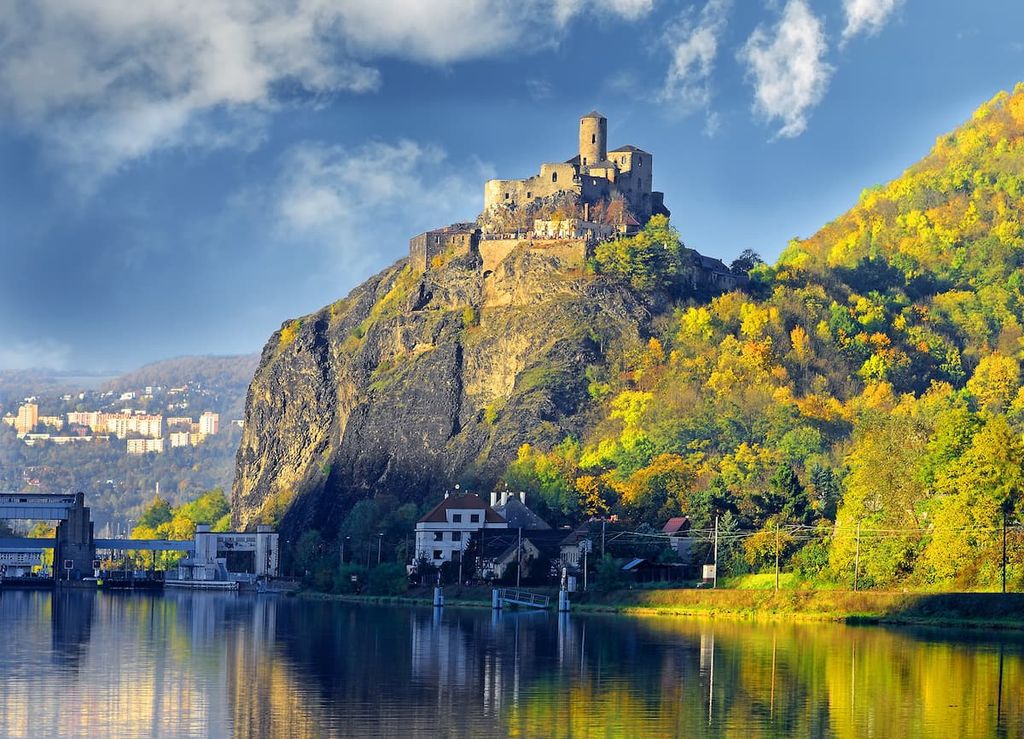
Explore Czechia with the PeakVisor 3D Map and identify its summits.








